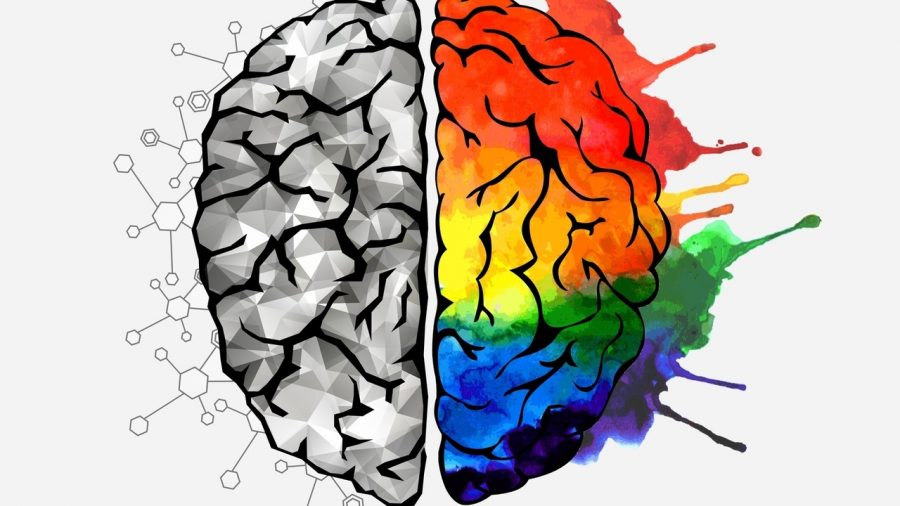Not all people who deal with mental health issues are the same
Creative concept of the human brain. Vector illustration
Every aspect of our lives seems to be like a coloring book. People believe there is no coloring outside the lines, no colors in the wrong places, the colors are all bright, and the picture has to look just right.
But, there are stray marks; sometimes the picture gets messy. One person’s mind can’t fit into a perfect mold of the next person’s. There’s a certain uniqueness to every mind that prevents people from knowing every thought running through others’ minds. I can’t understand the severity of someone’s mental health just by observation or my personal experiences with those types of issues, and neither can any other person. There’s no way to measure depression, anxiety, or some other mental “issue” in order for a doctor to tell whether or not someone is sick.
If someone has a low fever, they are still sick just like someone with a high fever. In the same way, someone with a more mild case of a mental illness is still mentally ill just as someone with a severe diagnosis is. The colors may not drift as far outside of the lines, but they still passed the solid black line separating the healthy part of their mind from the sick part, and that needs to be understood.
Some people’s pictures aren’t going to be as bright and happy as everyone else’s. Most often, it’s simply because the person just wasn’t in a good mood that day because of some unfortunate event, but other times they can’t help it. They can’t just force themselves out of that kind of mindset. People with severe mental illnesses like depression don’t wake up every morning and think, “Hey, I’m going to be extremely sad or irritated today because I want to.” There are a multitude of reasons why people develop mental illnesses. Sometimes these illnesses, most commonly depression, arise in people because of chemical imbalances or faulty mood regulation by the brain, stressful life events, medications, and some people are just more likely to develop a mental illness because of their genetics. In short, mental illness does not entail personal weakness or character defect. Many people need to, or choose to, be prescribed medication to help regulate whatever is causing their illness, but that doesn’t mean that every person you meet that has a mental health problem is on prescription medication, nor do they need to be.
Sometimes the picture just doesn’t look right. Around 20 percent of the teens in the U.S. have a mental health condition, and not a single one of those people exhibits the same exact symptoms and feelings as each other. You cannot apply the same mindset to a situation with a new person with a mental illness as you would with someone you already know who has that same issue. One person’s picture may have blue in an area that someone else’s has red, because neither of them has the same reaction to these illnesses. With depression, a large portion of people say they feel sad, but people can also experience extreme irritation like someone might if they had a physical injury that they have been walking on for too long without giving it time to heal. There is a gray area between a healthy mind and a mentally ill one, and there are many symptoms that fall into that area that people overlook.
There’s a stigma that surrounds mental health, and people always seem too afraid to bring it up in fear of being wrong about something. But, there is no right or wrong way to have a mental illness, and no two experiences are the same. We need to get past these beliefs and keep an open mind about mental health because the people who deal with these illnesses don’t need the extra baggage of feeling like they have to explain themselves whenever they come across someone who doesn’t understand the complexity of the mind.

Elise Hegg is a junior in her first year as a staff writer on The Central Trend. Elise has been at FHC since she started at Pine Ridge when she was five...



























































































